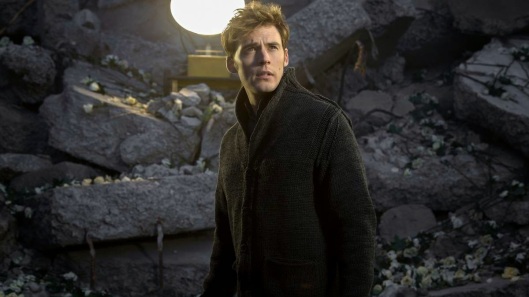
I just saw The Hunger Games; Mockingjay Pt1 (twice). Mockingjay is a well made movie. There’s a lot of really interesting and well executed aspects of the film that I could spend hours talking about. But what I wanted focus on was how the film effectively used exposition.
Filmmaking, and all types of storytelling, at its most basic is about getting information across. Character, setting, theme, and plot are all things that the filmmaker/storyteller has to tell to the audience. How you do this is the process of filmmaking/storytelling. The tricky part is that, the more the audience ‘sees’ the information being told to them, the more they understand and connect with it. The more the audience has to work for that information the more rewarding it is for them. In film, visually communicating information is more powerful and effective than orally communicating it. An example of this is the clip bellow from the film Up.
There is a lot of information being told in these quick scenes. It’s Carl’s whole back story, and it is done visually. Can you imagine how less powerful this section would be if we had a scene of the doctor telling Elle she can’t have a baby, or Elle and Carl talking about how important Paradise Falls is to them? Worse yet could you imagine how you would feel about all of this information if Carl just told it to another character in a later scene? It wouldn’t have been nearly as effective and it may even been boring.
Visual storytelling is better than audio storytelling, but there are times when something just can’t be told visually. There is no way to explain the information without words. Other times there’s also time, budget, and physical constants which force a filmmaker to find other means of communicating. The next best thing is give information through dialogue and conversation, the more natural, the better. Sometimes though there’s no easy way to fit a piece of information into a conversation. The filmmaker has to have a character just explain some piece of plot or back story. It is usually really boring.

Mockingjay has a lot of information to get across and sometimes its communicated through pure exposition. What makes the film so interesting is how they convey this information without being boring. There are two major scene exposition; Finnick talking about President Snow towards the end of the film and Gale recounting the bombing of District 12. These scenes should be be boring, but there are not. In Finnick’s scene, he’s telling President Snow’s back story. This is being told at the same time that Gale and members of District 13 are storming the capital to rescue the tributes. We cut between Finnick and the action unfolding. It is allows audience to get the information without being boring, or adding extra scenes. This trick is usually used in heist movies. In the Oceans movies, the steps of the heist are usually explained to the audience, while the heist is happening. This saves the audience from a long scene of George Clooney sitting around a table and talking the other characters. In Mockingjay, the exposition is mostly unrelated to the actions on screen. It is different than the norm but it works.
 The other scene, is with Gale while filming a propaganda pieces in the rubble of District 12. Gale talks about the night that District 12 was bombed. This scene is different from the one with Finnick, in that there is no action to keep the audience interested. While Gale talks, both the camera and the characters provide a lot of movement in the scene. Neither one stops for more than a few seconds and this action keeps the scene from being boring. The audience always has something to see including a half dozen characters played by incredibly talented actors. The characters’ reactions to Gale’s story are another thing that keeps the scene interesting. The audience has the movement of the camera, changing scenery, and character reactions to watch which keeps a scene of mostly plot exposition from feeling boring or stale.
The other scene, is with Gale while filming a propaganda pieces in the rubble of District 12. Gale talks about the night that District 12 was bombed. This scene is different from the one with Finnick, in that there is no action to keep the audience interested. While Gale talks, both the camera and the characters provide a lot of movement in the scene. Neither one stops for more than a few seconds and this action keeps the scene from being boring. The audience always has something to see including a half dozen characters played by incredibly talented actors. The characters’ reactions to Gale’s story are another thing that keeps the scene interesting. The audience has the movement of the camera, changing scenery, and character reactions to watch which keeps a scene of mostly plot exposition from feeling boring or stale.
There were other really great examples of great exposition and filmmaking in this movie. Watch the film again to see if you can pick up anything interesting. If you do, send me comments about what you think.
